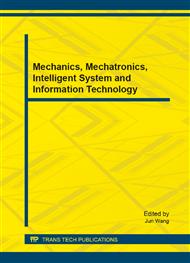p.897
p.905
p.910
p.915
p.921
p.927
p.933
p.939
p.944
A New Parameter Estimation Method Based on Spectrum Character in Satellite Communication
Abstract:
According to satellite communication, a novel parameter estimation method based on spectrum feature analysis is proposed. For the satellite communication signals shaped by raised cosine, the scheme enhance the efficiency of power spectrum and the square power spectrum of signals. The proposed method can estimate symbol rate and carrier frequency exactly in the satellite channel without any prior knowledge.
Info:
Periodical:
Pages:
921-926
Citation:
Online since:
August 2014
Authors:
Price:
Сopyright:
© 2014 Trans Tech Publications Ltd. All Rights Reserved
Share:
Citation:


